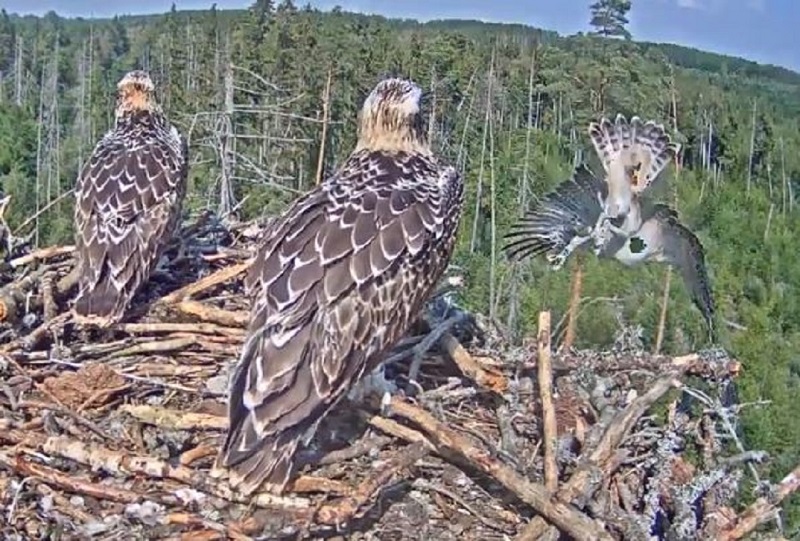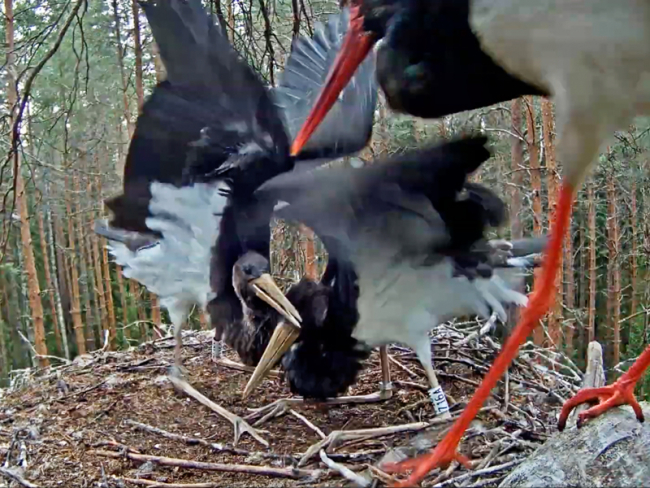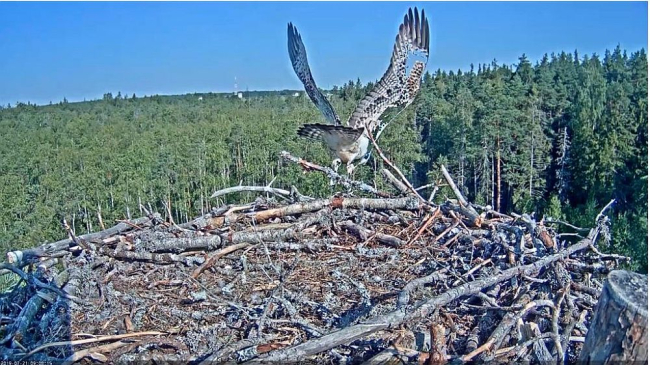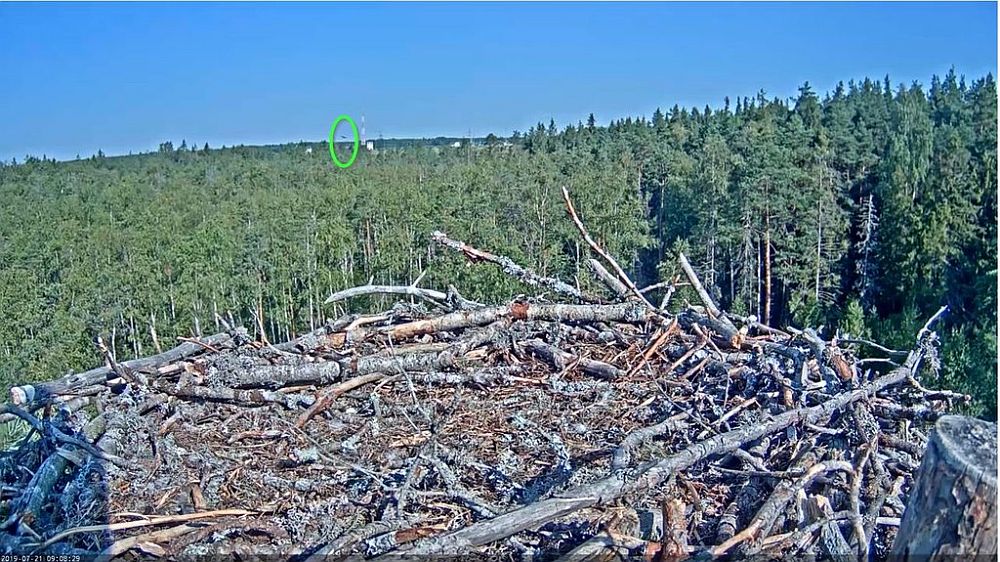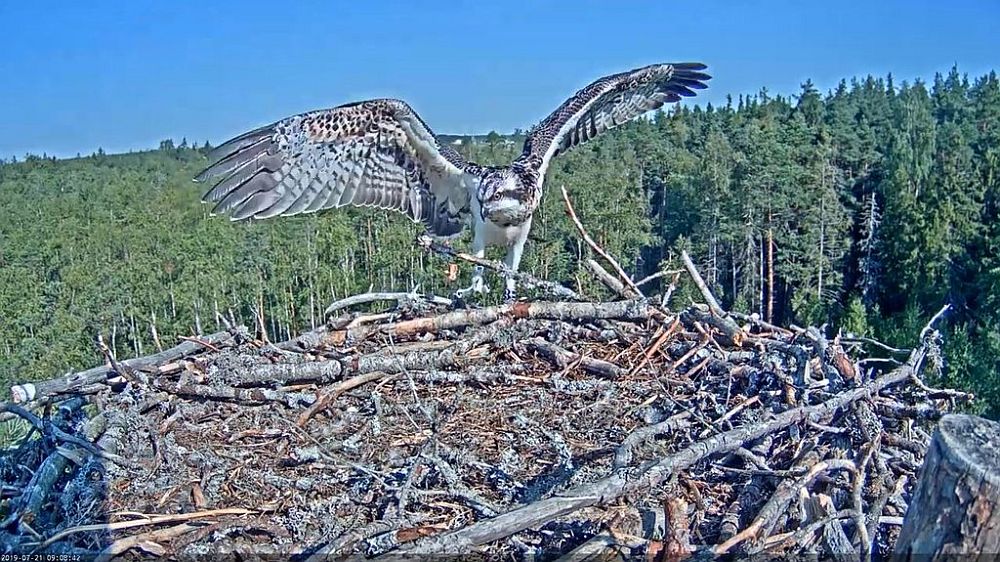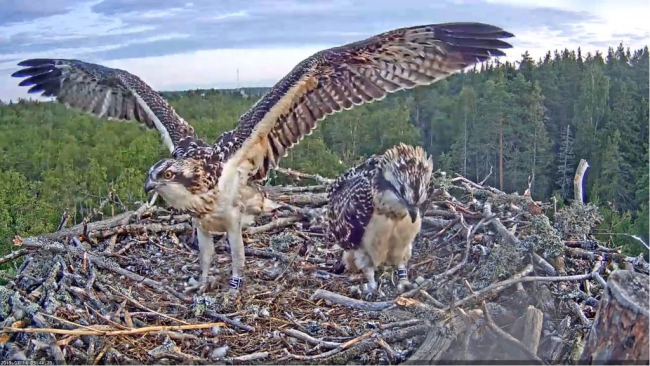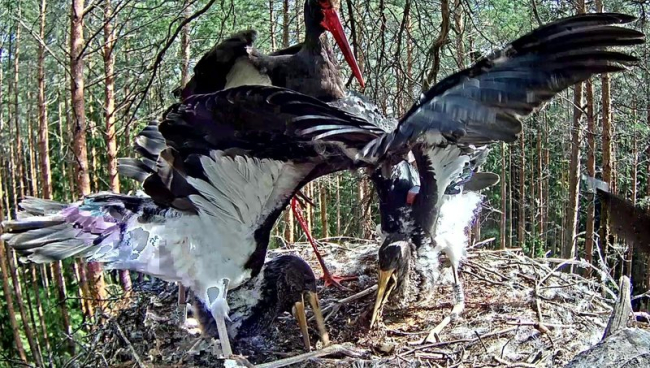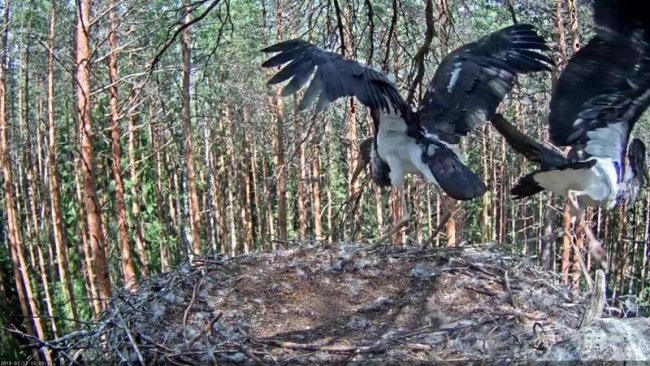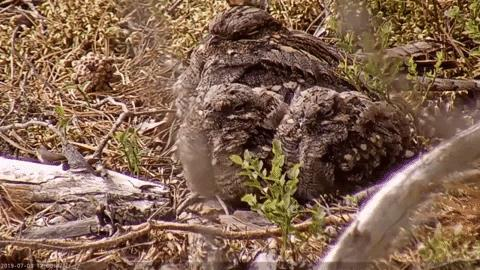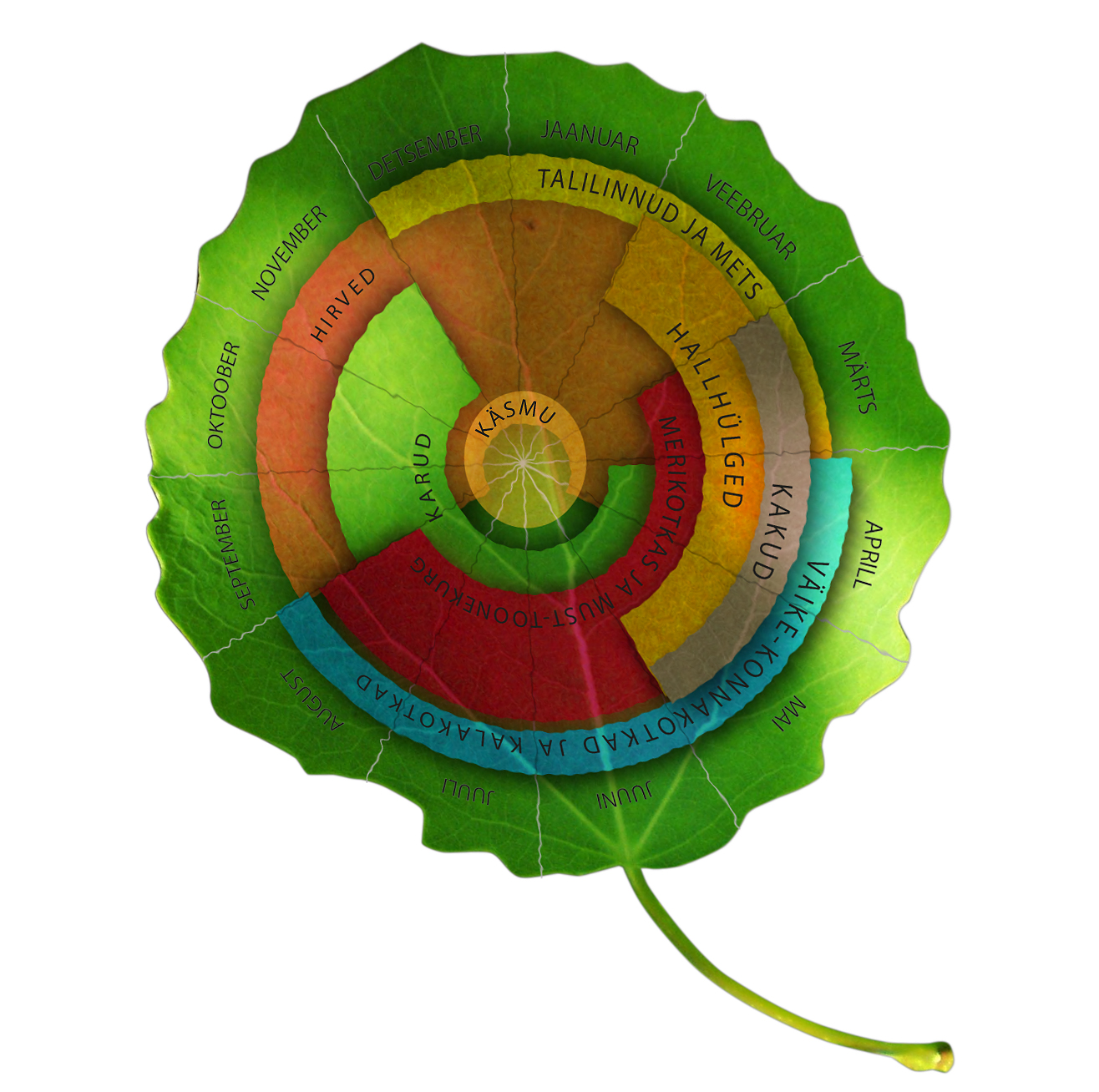The young birds of the Bird of the Year have started independent lives
Information from Estonian Ornithological Society
Images from web camera
Estonian text posted 25.07.2019
Two chicks were hatched for the Bird of the Year, the nightjar, monitored by the web camera
From early July all interested watchers could observe the nest life of the Bird of the year, the nightjar. Now the two chicks that were hatched in mid-June have started their independent lives and the nest camera ends its work.


